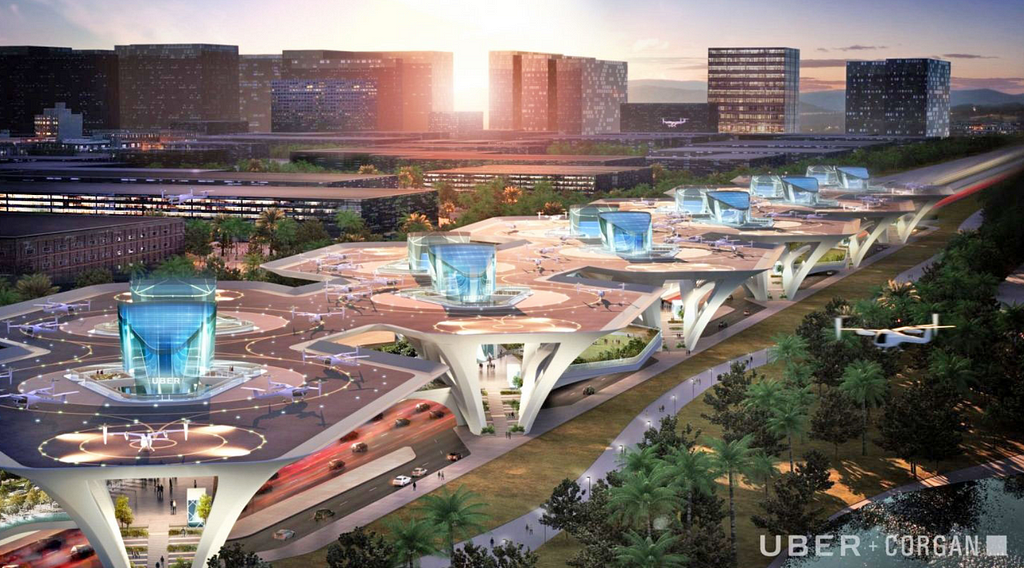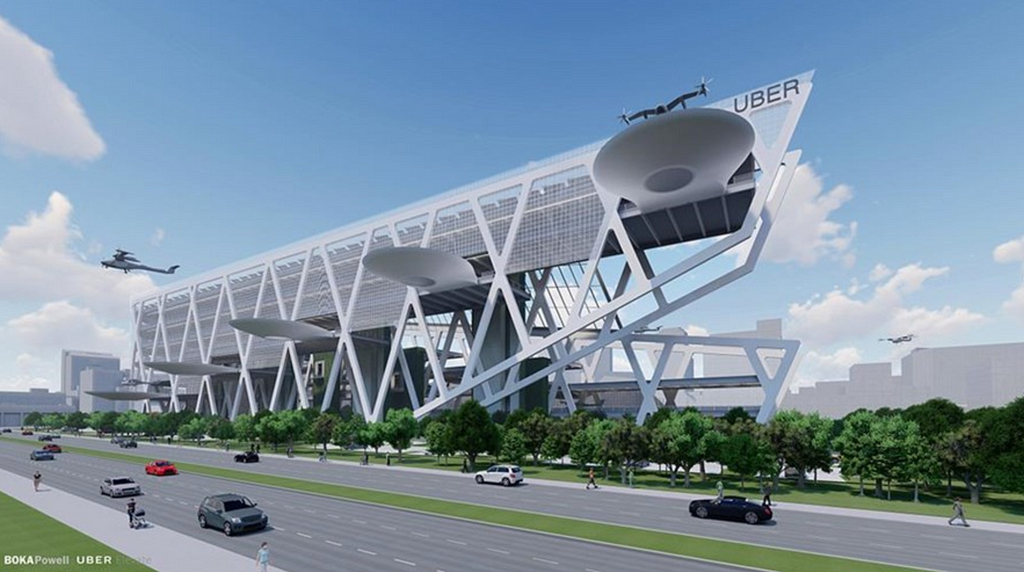Latest news about Bitcoin and all cryptocurrencies. Your daily crypto news habit.
It looks like a plane. It definitely is a form of aircraft, but given the name “flying car” denotes it more like an automobile in terms of transportation service. In the simplest form, “flying cars” are really larger sized version of drones. Drones operate on battery with electro-motors that propel blades which create lift and allow for control. So a flying car is like a larger sized version of a drone, with the ability to transport goods and passengers as a service. It is part of the MaaS or Mobility-as-a-Service platform. Think of your DJI drone, much bigger and where you can ride inside.
Here are Features of Flying Cars:- All electric, battery operated, no emission or hybrid fuel/electric- VTOL meaning they can vertically take off and land anywhere- Can be autonomous, no pilot or driver, GPS navigated- Saves time for passengers since traveling by air is much faster, no gridlock
 A flying car (Source: Cora https://cora.aero/)
A flying car (Source: Cora https://cora.aero/)
A flying car consists of blade rotors which provide lift, vertically, thus they don’t require much space the way planes require a runway. Once vertical, propellers produce forward lift to move the flying car forward which is also called thrust. The flying car can then maneuver like a drone or airplane with a flight controller. Most plans are for autonomous control, though they can also have a pilot for safety purposes. They can also be controlled remotely from a base station. Flying cars will be electric battery operated vehicles for the most part, though there are hybrid vehicles like the flying car TF-X developed by Terrafugia.
The Uber Air flying car concept is another really good idea around traffic in congested cities like LA, provided as a taxi service or MaaS. While the Boring Company is digging tunnels for hyper speeds, another obvious way to avoid gridlock is to take to the skies. It was announced during their 2018 Elevate Summit. So this addresses the issue of where will flying cars land and how to ride one. With flying cars come “Skyports”. Skyports will accommodate both takeoff and destination for passengers who can then connect with local transit routes to continue their journey. It is going to benefit people who need to get places fast and willing to pay extra for it. The money that is lost in traffic is better spent on transport systems that can cut time and in the long run save money. This won’t be like the typical Uber ride where someone picks you up though, which was what I was hoping for since it would be more convenient than having to go to a skyport.
 Concept of “Skyport” (Source: Uber)
Concept of “Skyport” (Source: Uber)
Uber is trying to get legit on this one by partnering with NASA, though they could have partnered with Space X and actually let Elon Musk do the thinking. The potential for flying cars is just as big as self-driving cars. It’s just the credibility of those behind the project who will make it work. The flying car service is also planning on being autonomous, pilotless vehicles. What partnering with NASA will do for Uber is in helping them develop air traffic management systems for the flying taxis.
In 10 years they could have a skyport, let’s say on Sepulveda and Santa Monica near the 405. A great transport hub near Westwood and Beverly Hills. Commercial establishments will surely grow around these areas as well, and there will be other services available like self-driving taxis, charging stations for mobile devices, robot information guides, driverless hotels and autonomous mobile vendors. Uber is partnering with NASA to make this happen, so they are going to be strictly regulated just like with self-driving cars. It may soon look more like Coruscant than the west side, and the “force” will be with you in the sky.
 Skyports will be like todays transit stations for buses and trains. (Source: Uber)
Skyports will be like todays transit stations for buses and trains. (Source: Uber)
The idea of flying cars may sound like sci-fi straight out of Star Wars or the Jetsons. It is becoming reality much sooner than we think. Trial runs will begin in major cities and expand to inter-city travel. Flying cars were not meant for international travel, though that could change in the future when more advanced flying cars are built. Flying cars are not exactly cars, though they can drive for short distances. They are really a form of vehicle that is capable of flying for personal or public use which do not require a runway or airport. There is still no actual flying car yet that can “transform” into a driving machine for street and road use. A concern about vehicles like these which are autonomous and remote controlled is protection from hackers. There should be cybersecurity standards in place to protect the signals and access to the networks that control these vehicles. Then the next step is for regulators to determine safety and operation, then we can see flying cars take to the air.
Further Reading:
Uber Air Taxi https://www.engadget.com/2018/05/08/uber-air-taxi-prototype-elevate/
CNBC reports on Uber’s Flying Car Taxi Servicehttps://www.cnbc.com/2017/11/08/uber-nasa-work-on-flying-taxis.html
Flying Cars, Taking to the skies to avoid traffic was originally published in Hacker Noon on Medium, where people are continuing the conversation by highlighting and responding to this story.
Disclaimer
The views and opinions expressed in this article are solely those of the authors and do not reflect the views of Bitcoin Insider. Every investment and trading move involves risk - this is especially true for cryptocurrencies given their volatility. We strongly advise our readers to conduct their own research when making a decision.